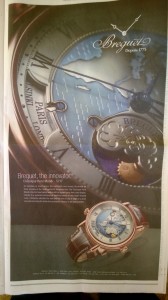More on the craft economy.
One current marketing trend in America, partially caused by the recession, is the craft economy. People learning to cook at home, fix their broken stuff, use better quality, better value products – a la craft beer. But beyond the recession, as America’s leisure time has become a bit more focused on technology (TV, video games, social networking) I see some blow back from those who want more…and they are turning to the craft economy. Both as buyers and sellers.
This morning I drove past a McDonagh’s Milk delivery truck and realized this small local dairy is schlepping milk around in glass quart bottles. It made me want to drink fresh milk. There were no ads on the very spare truck, yet I felt something and did something (like write about it.) If the craft economy can by its very nature drive demand, it needn’t rely on advertising – and that is why I know the craft economy is for real. Our town just started a local farmer’s market, and it’s filled with craft economy buyers and sellers. Communing about craft.
So where do people go on the web to find craft people and products? And who will curate that web content? Who will determine what is craft and what is mass-produced, junk economy material? I suspect some entrepreneur will latch on and use Yelp-like rating to do it. But that’s not particularly crafty. Let’s see who wins. Because it’s coming. Peace!


